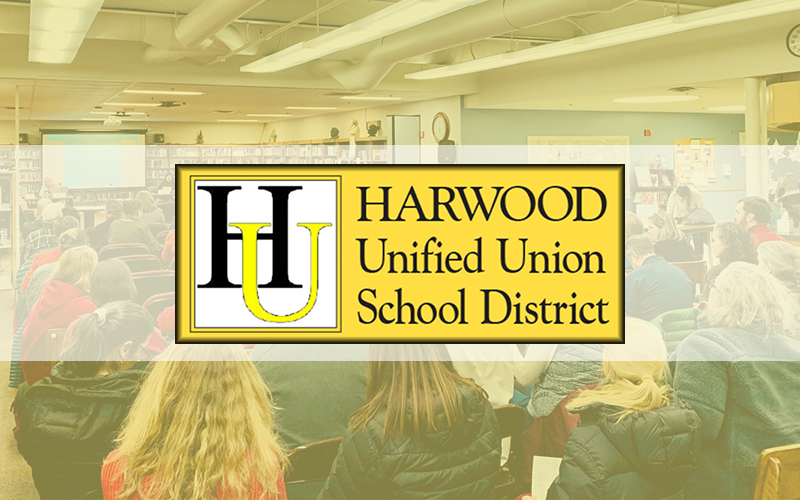As The Valley Reporter goes to press on Wednesday, June 24, the Harwood Unified Union School District (HUUSD) Board will meet to reopen the middle school merger discussion. Over the past few weeks, four board members on a special preK-12 committee (Torrey Smith, Duxbury; Johnathan Clough, Warren; Tim Jones, Fayston; and Jeremy Tretiak, Waitsfield) have met several times to discuss the details of a potential merger.
Committee members were adamant that the merger discussion needs to happen differently this time, given the public backlash to the board’s last attempt at introducing a merger several months ago. “When we went back and forth this fall, that was really hard on the community and hard on the board,” said HUUSD vice chair Torrey Smith.
At the June 24 board meeting, committee members will recommend that the board start the merger discussion earlier (as not to conflate the merger discussion with the budgeting process), be more specific about what will change (as not to lump the separate issues of Harwood seventh- and eighth-grade rezoning with Moretown fifth- and sixth-grade rezoning together) and include more opportunities for public input.
Specifically, the preK-12 committee will recommend that the board, first, make a decision about consolidating just the district’s seventh- and eighth-grade students at Crossett Brook Middle School (CBMS). In terms of a timeline, the committee will recommend that this decision be made within the first few meetings of the board’s return from summer recess in order to ensure that the merger decision does not overlap with the November budgeting process. “I think we need to keep this conversation as far away from the budget as possible. That got us into a lot of trouble last time,” said Tretiak, referring to prior public accusations that the board used the budgeting process as a means of reconfiguring the district’s schools. “I’m willing to learn from that experience because I certainly voted in favor of conflating those two issues and I would not do that again.”
COMMITTEE RECOMMENDATION
The committee will also recommend that the board focus on only the seventh- and eighth-grade consolidation for the 2021-2022 school year. “I feel personally, from what I’ve heard from the community, there’s more of a consensus over the middle school piece than there is over the Moretown reconfiguration,” said Clough. To this, Tretiak added that while there might be benefits in merging both groups at the same time, separating the Harwood seventh- and eighth-grade rezoning decision from the Moretown fifth- and sixth-grade rezoning decision would give the board a better chance to understand what people are actually voting on.
The decision to focus on seventh- and eighth-grade rezoning doesn’t take the Moretown component completely off the table, however. These decisions will be taken up at a later time to be determined by the board. Additionally, the committee acknowledged the possibility that the financial situation caused by the COVID-19 pandemic may be so dire that the board might need to move Moretown fifth- and sixth-grade students to CBMS or close Fayston School in order to save money.
NOT ONLY REASON
Still, the committee was adamant that saving money isn’t the only reason to pursue a merger and will recommend that the board do a better job at explaining why the merger is good for students as well as taxpayers. During a public comment period, Christine Sullivan, Waitsfield representative to the HUUSD Board, explained how the merger decision revolves around equity with CBMS offering more science, math and music programming to students than Harwood Union Middle School (HUMS). “Leaving Harwood as is without attending to the programmatic differences between the two schools (HUMS and CBMS) is a moral shortcoming. If we’re going to continue to have two campuses, we need to address those equity issues,” said Sullivan.
At the board meeting on June 24, the committee will also recommend that the administration create a data package regarding seventh- and eighth-grade consolidation to be presented to the board upon their return from recess on August 26. By sharing data about class size, programming opportunities, transition costs, bus routes, annex details and more, the data package should reveal both the economic- and equity-related pros and cons of a merger, especially since the board does not expect to pass a bond this year.
Finally, the committee will recommend that the board brainstorm ways to increase opportunities for community feedback and participation. “We can do a better job as a board at highlighting the opportunities for input,” said Tretiak after Smith suggested that the board hold extra public hearings on the merger issue. “We need to do whatever we can to advocate for more continuous engagement from the public versus waiting for those scheduled hearings. I don’t think we can rely on those one-off events to get all the input we need.”






